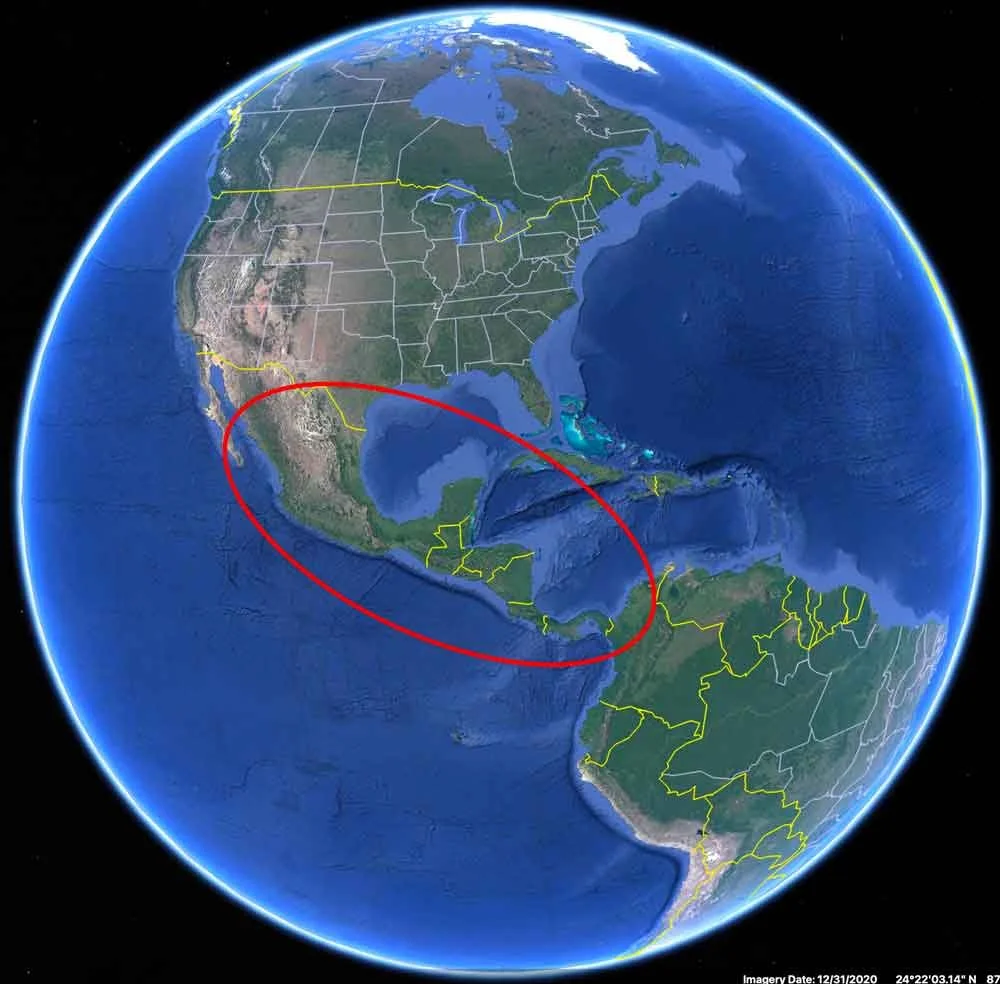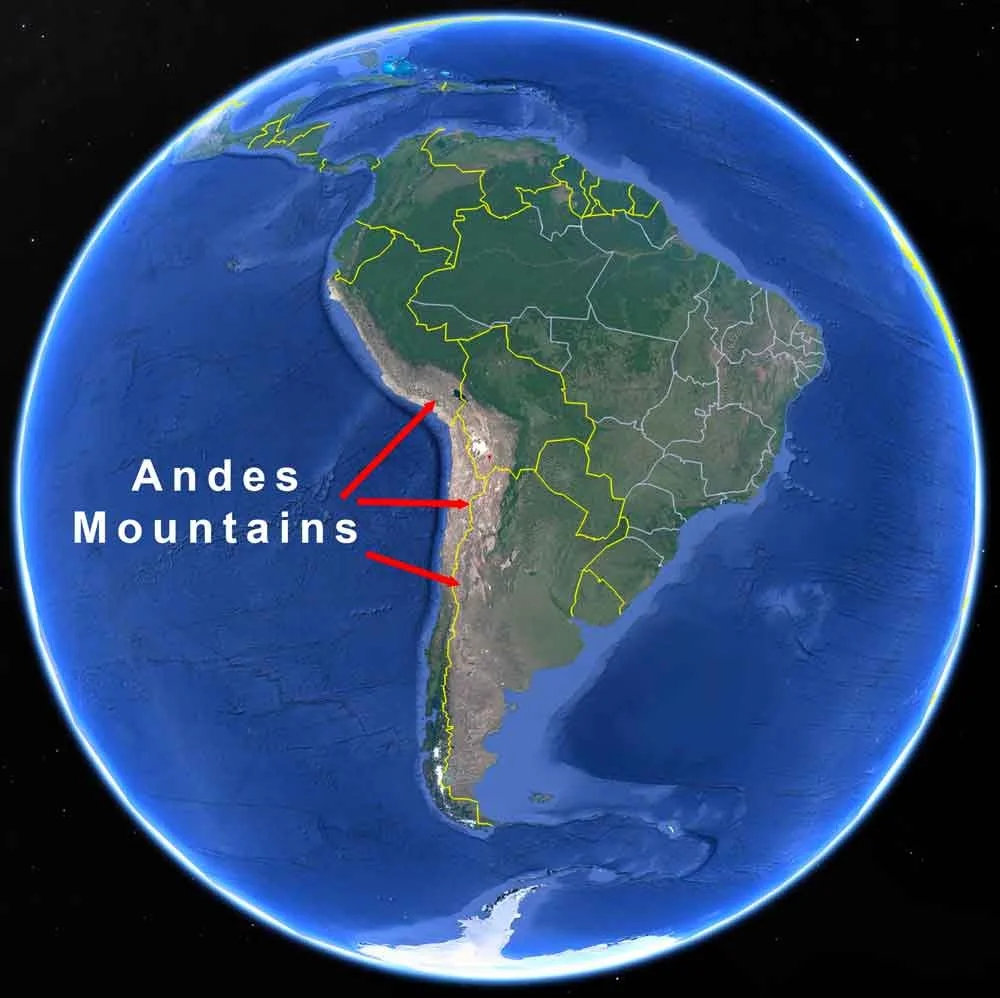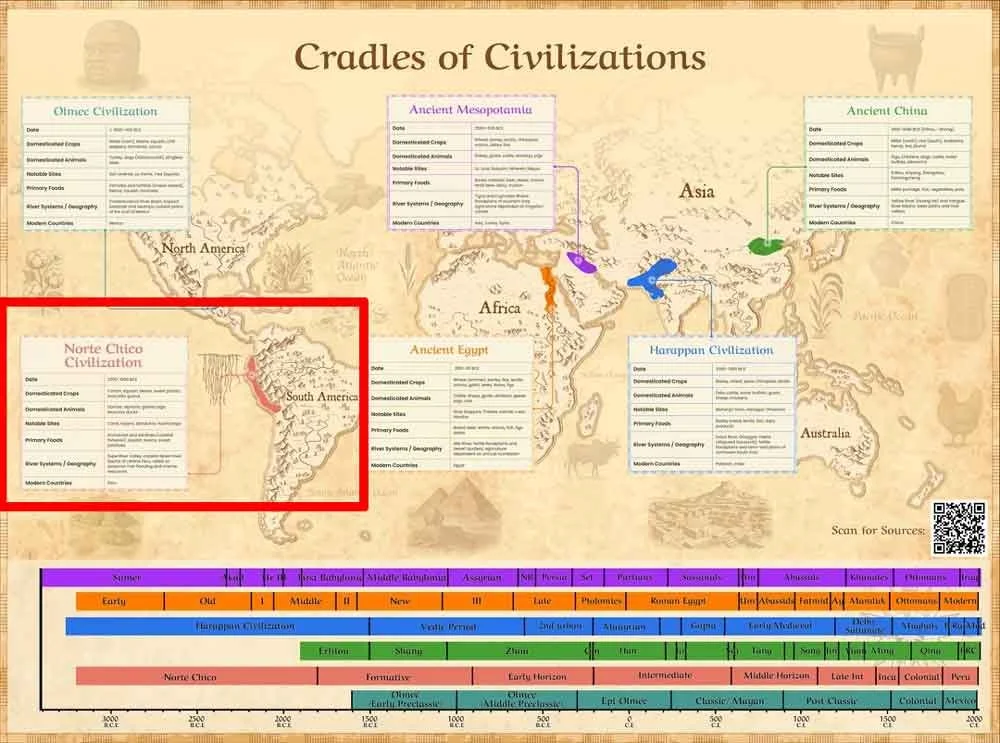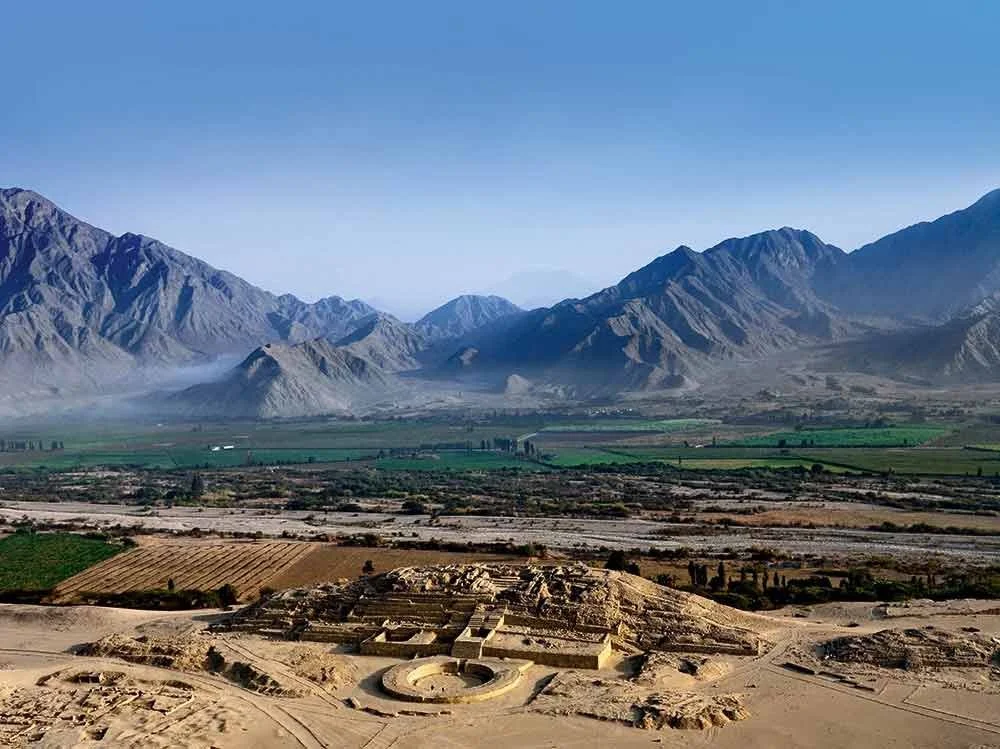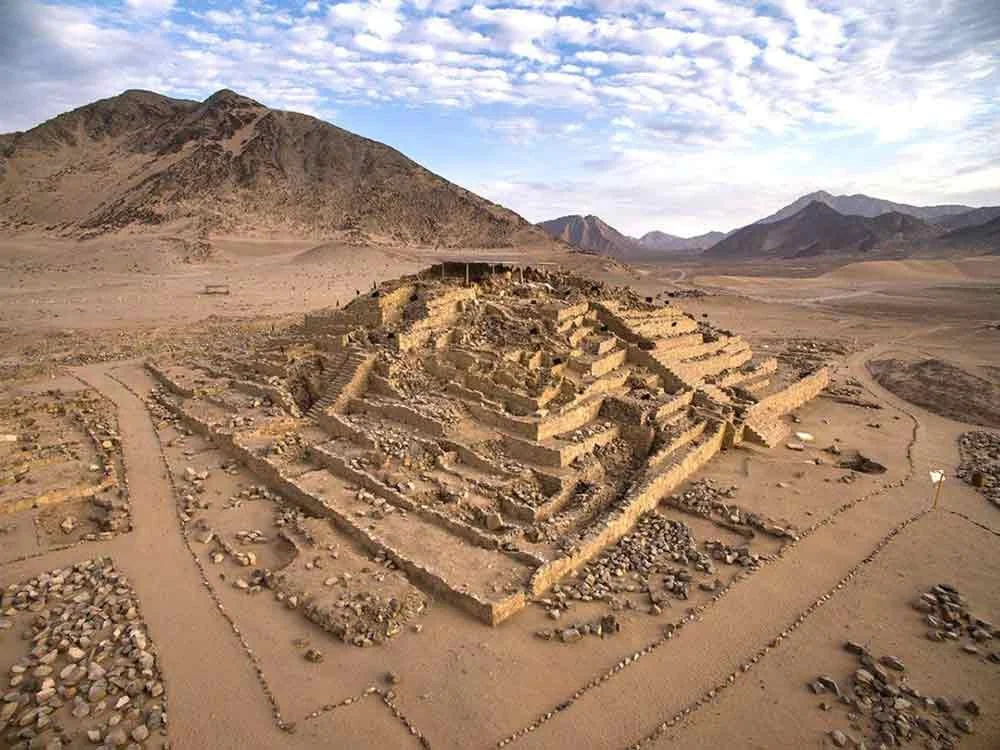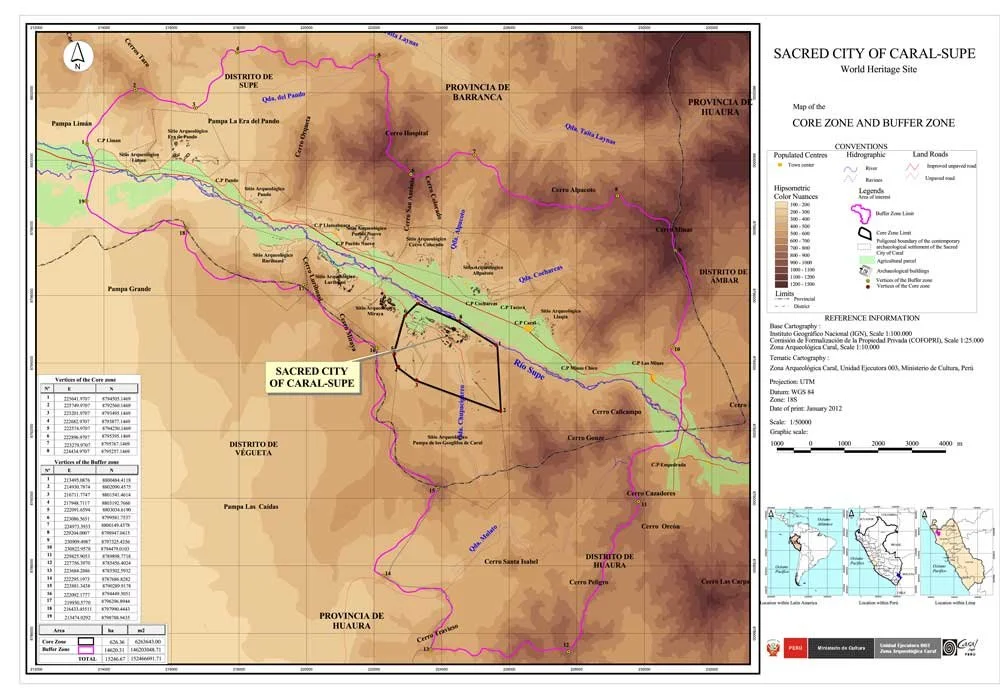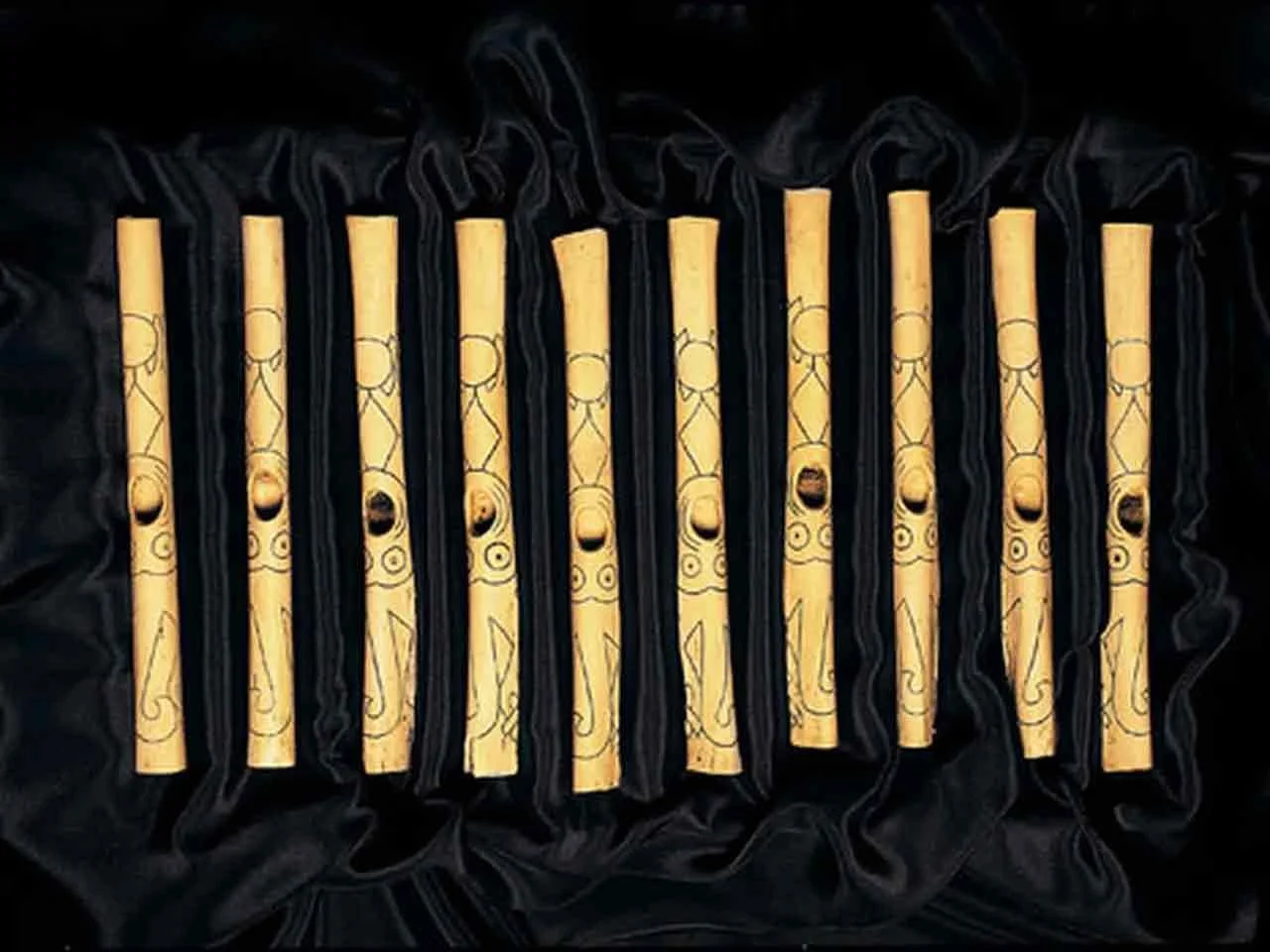PART 1
THE AMERICAS:
Nor-che Chico (Caral–Supe) civilization
• VIDEO 1 •
• START: At beginning 0:00
• STOP: At 2:31 — “The other civilization I want to point out is th Poverty Point…”
• Go to Video 2 >>>
• VIDEO 2 •
VIDEO 1
What does “meso” mean?
Where would we find Mesoamerica on a globe or map?
In what mountains would we have found the Nor-che Chico (Caral-Supa) civilization?
In what country are these mountains located today?
Name one other civilization as old as the Nor-che Chico (Caral-Supa) civilization.
Why might the Nor-che Chico (Caral-Supa) civilization not developed writing or pottery?
VIDEO 2
Describe the sacred city of Caral.
Describe the stones used to build the walls.
Caral was built in an earthquake zone. What did the builders of Caral do to make their buildings earthquake-proof?
What evidence is there that the people of Caral were peaceful and not warlike?
• Read •
PART 1
THE AMERICAS:
Nor-che Chico (Caral–Supe) civilization
• VIDEO 1 (STOP at 2:31) •
INTRODUCTION
Hi. This is Matt Baker, and today I’m going to talk about the Pre-Columbian Americas.
I’ll once again be using one of the four foldout charts found in my Timeline of World History book—this time the chart about the Americas.
Americas Section Overview
“Meso” literally means “middle,” referring to the fact that Mesoamerica is in between the main parts of North America and South America.
So, basically, when we say Mesoamerica, we’re talking about what is now called Mexico and Central America.
I want to point out two civilizations that existed in the Americas before the year 800 BCE. Let’s quickly refer to the main chart, which starts further back.
Early Civilizations: Nor-che Chico Civilization
The first civilization I want to point out is the Nor-che Chico civilization, located in the Andes Mountains in what is today Peru.
It ranks as one of the four oldest civilizations in the entire world and was flourishing at the exact same time as the Egyptian, Sumerian, and Indus Valley civilizations. [ China too! ]
Those last three were located near each other and thus had an advantage.
In contrast, the Nor-che Chico civilization was all alone—literally on the other side of the planet.
This is probably why, even though they built large stone structures, they didn’t have certain other things you might expect, such as pottery or written symbols.
• VIDEO 2 •
The Sacred City of Caral
The ancient settlement of Caral is located in Peru, South America. It is here that the remains of the oldest known civilization in South America have been found.
Six pyramidal structures can still be seen in an area covering over 600 hectares, which, more than 4,500 years ago, was a thriving community.
The Pyramids of Caral
The largest pyramid on the site is called Pyramid Mayor.
The stones used to make the walls are cut evenly, and the largest stone used in this pyramid weighs over 500 kilograms.
The pyramid stands 20 meters high. A small room built on top is believed to have been used for religious ceremonies.
Some items found at the site support this theory.
For example, a clay figurine with long hair, a colorful costume, and necklaces bears the same characteristics as a shaman from that period.
It is believed that shamans were able to communicate with gods.
Unique Building Techniques
Some interesting and unique building techniques were used in the pyramid structures, which are located in a seismic area.
Inside the walls, string is woven between the stones. Stones were placed inside nets made of plant fiber before being stacked on top of each other.
It is believed that these nets acted as shock absorbers during earthquakes, suggesting that the people of Caral had already developed anti-seismic building methods.
Other Features of the Site
There is an interesting geoglyph in the corner of the site: a human face in profile, made with stones on the ground. The civilization that grew here could have laid the roots for the Nazca and Inca civilizations.
Within this ancient circle, various items have been uncovered. For example, archaeologists have found a number of flutes made from pelican and condor bones.
No weapons have been found at the site so far, leading archaeologists and anthropologists to ask whether this was a community that made music rather than war.
Abandonment – The act of leaving something behind and not returning to it.
Advanced – More developed or complex than others.
Agriculture – The practice of growing crops and raising animals for food.
Archaeological – Related to the study of ancient things people left behind.
Architecture – The design and building of structures like houses, temples, and pyramids.
Authenticity – Being real or true; not fake.
Ceremonial – Related to a formal event or religious ritual.
Civilization – A society with cities, government, and different jobs for people.
Complexity – The state of having many parts that are connected or hard to understand.
Contemporaries – People or things that lived or existed at the same time.
Criterion – A rule or reason used to judge or decide something.
Development – The process of growing or becoming more advanced.
Figurines – Small statues or models of people, animals, or objects.
Ideology – A set of ideas or beliefs that guide how people live or govern.
Integrity – The state of being whole or undamaged.
Manifestation – A clear example or sign of something.
Monumental – Very big and important, often used to describe large buildings.
Mounds – Raised areas of earth made by people, sometimes used for ceremonies or burials.
Pyramidal – Shaped like a pyramid.
Quipu – A tool made of knotted strings used to record information in ancient Andean cultures.
► COMPREHENSION QUESTIONS
— please answer with complete sentences
VIDEO 1
What does “meso” mean?
Where would we find Mesoamerica on a globe or map?
In what mountains would we have found the Nor-che Chico (Caral-Supa) civilization?
In what country are these mountains located today?
Name one other civilization as old as the Nor-che Chico (Caral-Supa) civilization.
Why might the Nor-che Chico (Caral-Supa) civilization not developed writing or pottery?
VIDEO 2
Describe the sacred city of Caral.
Describe the stones used to build the walls.
Caral was built in an earthquake zone. What did the builders of Caral do to make their buildings earthquake-proof?
What evidence is there that the people of Caral were peaceful and not warlike?
► From EITHER/OR ► BOTH/AND
► FROM Right/Wrong ► Creative Combination
THESIS — Argue the case that there’s little point in studying civilizations and cultures from so long ago.
ANT-THESIS — Argue the case that it is vitally important to learn all we can about the civilizations and cultures from the distant past.
SYN-THESIS — Can you bring these two perspectives together?







